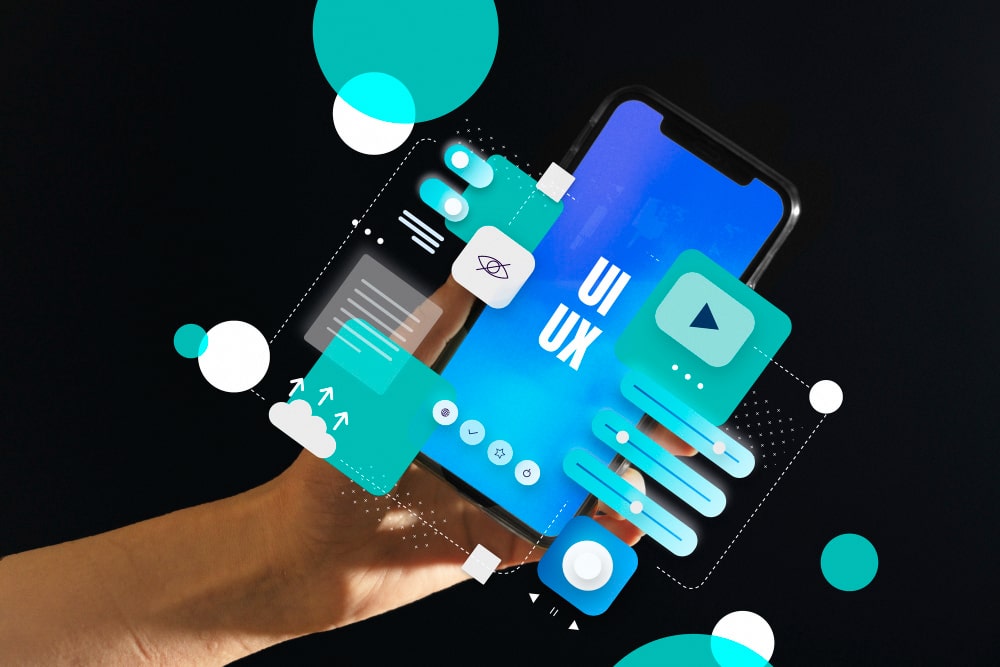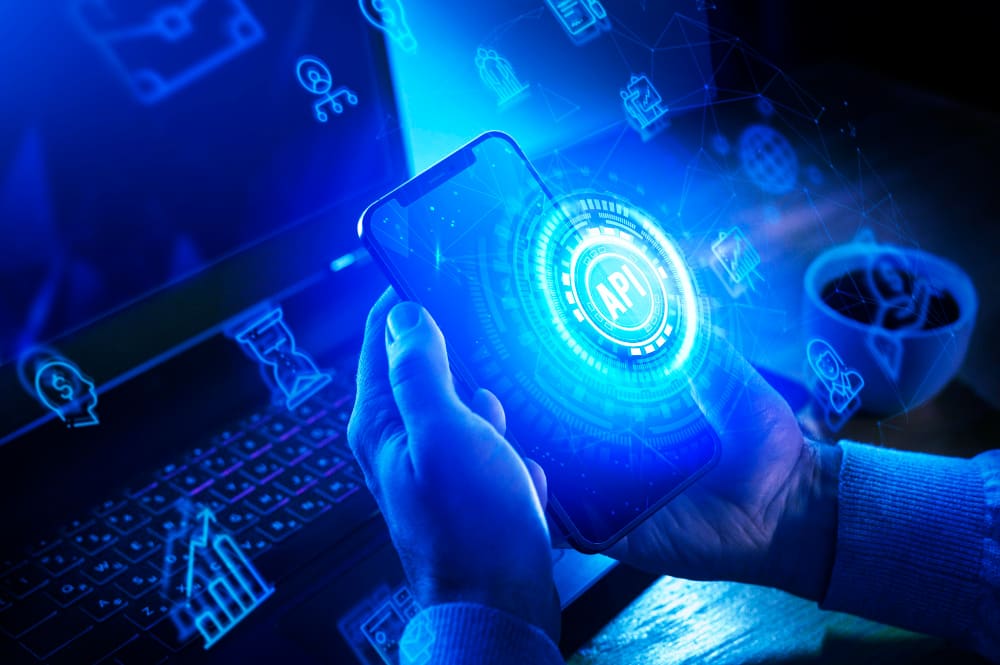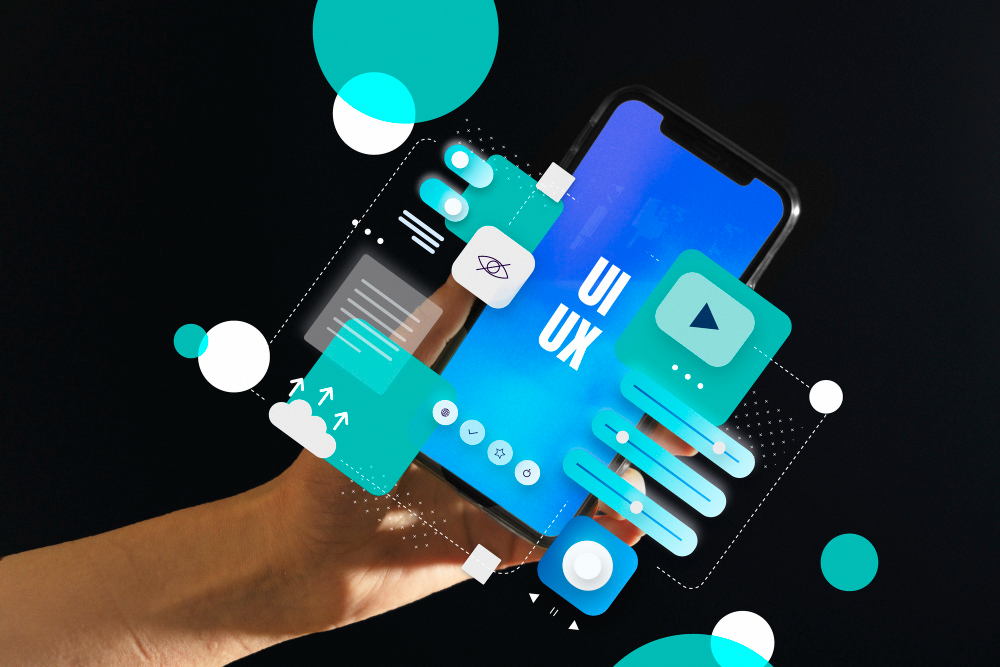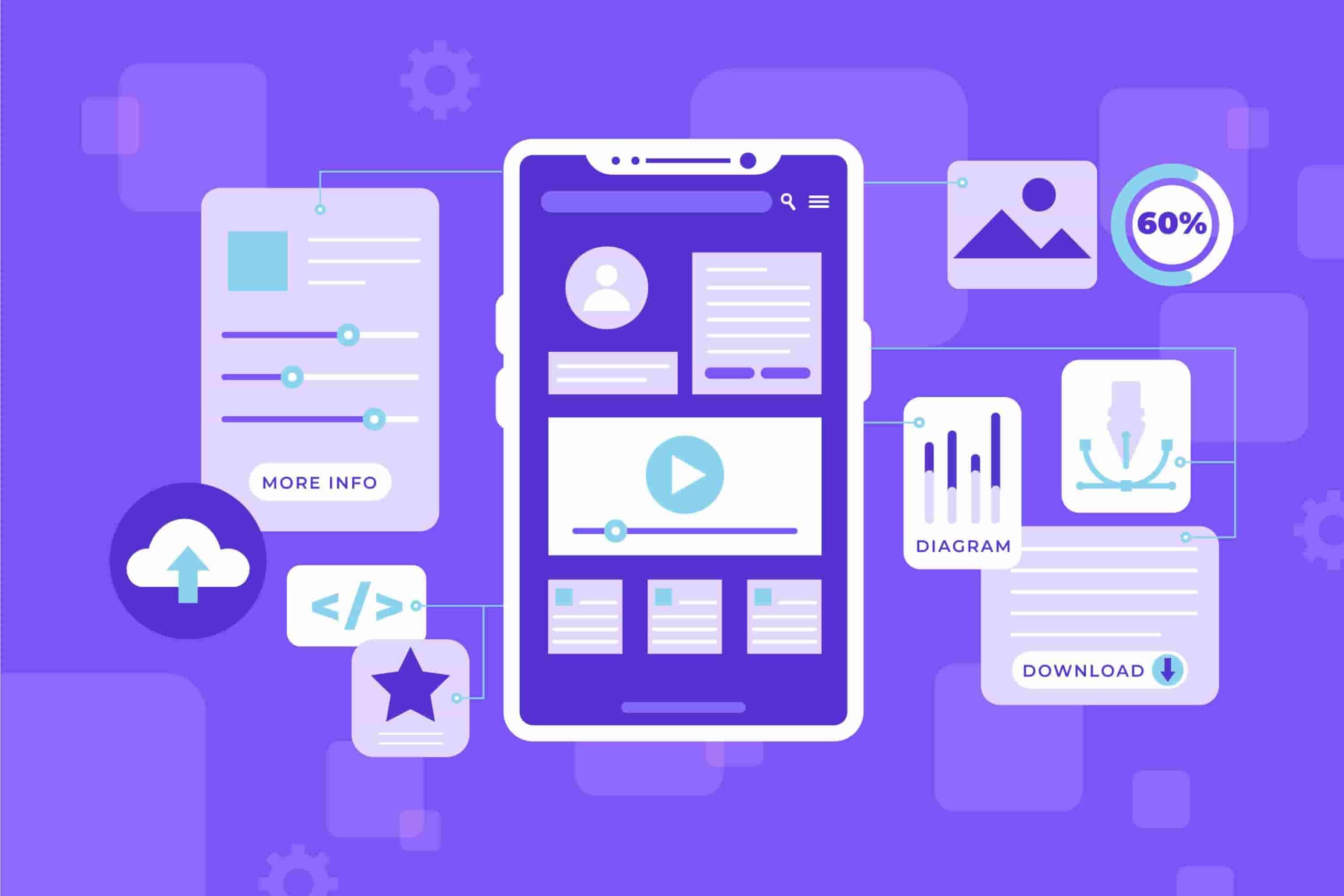Comprehensive Guide of Mobile App Development
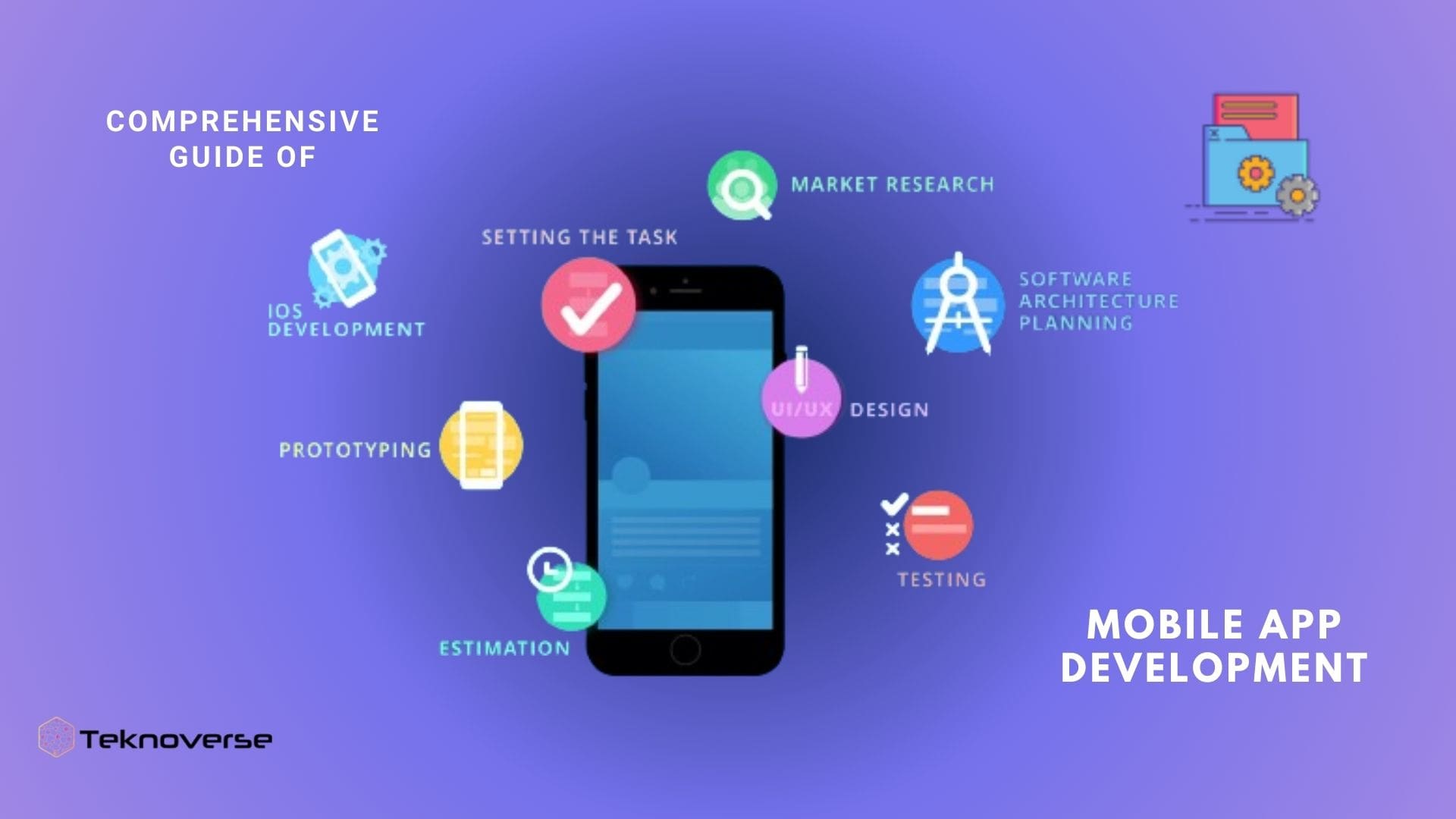
Mobile app development is the process of creating software applications that run on mobile devices, such as smartphones and tablets. Mobile apps can provide various functions, such as entertainment, education, productivity, social networking, e-commerce, and more.
Table Of Content
– The benefits of mobile app development for both businesses and users
– The types of mobile app development and their advantages and disadvantages
– The stages of mobile app development and their key activities and outcomes
– The tools and technologies for mobile app development and their features and functions
– The best practices for mobile app development and their tips and tricks
Benefits of Mobile App Development
Mobile app development can offer many advantages for both businesses and users. Some of the benefits are:
Increased customer engagement:
Mobile apps can help businesses connect with their customers in a more personalized and interactive way, such as sending push notifications, offering loyalty programs, and collecting feedback. For example, Starbucks uses its mobile app to reward its customers with free drinks, coupons, and personalized offers based on their purchase history and preferences.
Enhanced brand awareness:
Mobile apps can help businesses increase their brand visibility and recognition, as well as create a positive image and reputation among their target audience. For example, Nike uses its mobile app to showcase its products, inspire its customers with motivational stories, and encourage them to join its fitness community.
Improved operational efficiency:
Mobile apps can help businesses streamline their processes and workflows, such as automating tasks, reducing errors, and saving time and costs. For example, Uber uses its mobile app to connect its drivers and riders, manage its payments and ratings, and optimize its routes and fares.
Expanded market reach:
Mobile apps can help businesses access new markets and customers, as well as increase their sales and revenue. For example, Airbnb uses its mobile app to offer its users a variety of accommodation options around the world, from apartments to castles.
Types of Mobile App Development
There are three main types of mobile app development:
Native app development:
Native apps are developed using specific programming languages and tools for each platform, such as Swift or Objective-C for iOS and Java or Kotlin for Android. Native apps can offer the best performance, user experience, and functionality, but they require more time, resources, and maintenance. For example, Instagram is a native app that offers a smooth and fast user experience with features such as filters, stories, reels, etc.
Web app development:
Web apps are developed using web technologies, such as HTML, CSS, and JavaScript. Web apps run on web browsers and can be accessed from any device. Web apps can offer the lowest cost, fastest development time, and easiest maintenance, but they have limited performance, user experience, and functionality. For example, Wikipedia is a web app that offers a simple and informative user experience with features such as search, history, bookmarks, etc.
Hybrid app development:
Hybrid apps are developed using native and web technologies, such as React Native or Ionic. Hybrid apps can run on multiple platforms with a single codebase and can offer a balance between performance, user experience, functionality, cost, time, and maintenance. For example, Facebook is a hybrid app that offers a rich and interactive user experience with features such as news feeds, messenger chat heads, etc.
Stages of Mobile App Development
The mobile app development process can be divided into six stages:
Planning:
This stage involves defining the goals, scope, features, budget, timeline, and target audience of the app. It also involves conducting market research, competitor analysis, user persona creation, and user journey mapping. The outcome of this stage is a clear vision, strategy, and roadmap for the app.
Designing:
This stage involves creating the visual elements of the app, such as the user interface (UI), user experience (UX), wireframes, mockups, prototypes, and branding. It also involves testing the usability and functionality of the app with users and stakeholders. The outcome of this stage is a user-friendly, attractive, and consistent design for the app.
Developing:
This stage involves coding the app using the chosen programming languages, tools, and frameworks. It also involves integrating the app with external services and APIs (application programming interfaces), such as databases, cloud platforms, payment gateways, etc. The outcome of this stage is a functional, reliable, and secure app.
Testing:
This stage involves verifying the quality and performance of the app using various testing methods and tools. It also involves identifying and fixing any bugs or errors in the app. The outcome of this stage is a bug-free, optimized, and ready-to-launch app.
Deploying:
This stage involves launching the app to the app stores or web servers. It also involves obtaining the necessary approvals and permissions from the platform owners or authorities. The outcome of this stage is a live, accessible, and downloadable app.
Maintaining:
This stage involves updating and improving the app based on user feedback, analytics data, market trends, security issues, etc. It also involves providing technical support and customer service to the users. The outcome of this stage is an updated, enhanced, and loyal app.
Tools and Technologies for Mobile App Development
There are many tools and technologies available for mobile app development. Some of the most popular ones are:
Programming languages:
Swift or Objective-C for iOS; Java or Kotlin for Android; HTML5 or JavaScript for the web, React Native or Ionic for a hybrid. Developers use these languages to write the code for the app’s logic, functionality, and appearance.
IDEs (integrated development environments):
Xcode for iOS; Android Studio for Android; Visual Studio Code or Sublime Text for web, Expo or Cordova for hybrid. These are the tools that developers use to edit, compile, debug, and run the code for the app.
Frameworks: UIKit or SwiftUI for iOS:
Android Jetpack or Material Design for Android; Bootstrap or Angular for web; Flutter or NativeScript for hybrid. These are the libraries that developers use to simplify and speed up the development process by providing ready-made components, templates, and features for the app.
Libraries Alamofire or Firebase for iOS:
Retrofit or Volley for Android; jQuery or React for the web, Ionic Native or React Native Elements for hybrid. These are the modules that developers use to enhance and extend the functionality of the app by providing additional features, such as networking, database, authentication, etc.
Testing tools XCTest or Appium for iOS:
Espresso or Robotium for Android; Selenium or Cypress for web, Detox or Jest for hybrid. These are the tools that developers use to test the quality and performance of the app by simulating user actions, checking results, and reporting errors.
Deployment tools:
TestFlight or Fastlane for iOS, Google Play Console or Gradle for Android; GitHub Pages or Netlify for web; Capacitor or CodePush for hybrid. These are the tools that developers use to deploy the app to the app stores or web servers by automating tasks, such as building, packaging, uploading, and updating.
Best Practices for Mobile App Development
To ensure a successful mobile app development project, some of the best practices are:
Follow Agile Methodology:
Agile methodology is an iterative approach that allows developers to deliver working software in short cycles called sprints. Agile methodology can help developers adapt to changing requirements, collaborate with users and stakeholders, and improve the quality and efficiency of the app.
Use design thinking:
Design thinking is a human-centered approach that focuses on understanding the needs, preferences, and behaviors of the users. Design thinking can help developers create apps that are useful, usable, and desirable for the users.
Apply MVP (minimum viable product) concept:
MVP is a version of the app that has the minimum features and functionality required to test the app’s value proposition and user feedback. MVP can help developers validate their assumptions, reduce risks, and save time and costs.
Implement security measures:
Security is a crucial aspect of mobile app development that involves protecting the app from unauthorized access, data breaches, malware attacks, etc. Security measures can include encryption, authentication, authorization, firewall, etc.
Optimize performance:
Performance is a key factor that affects the user satisfaction and retention of the app. Performance optimization can include reducing the app size, improving the app speed, enhancing the app battery life, etc.



